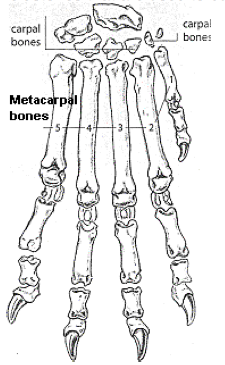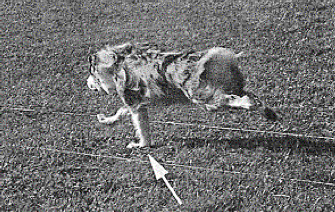Recently there has been some debate again in the Cavalier King Charles Spaniel community regarding dewclaws. Dewclaws are the fifth toe which cavaliers have on their front (and sometimes hind) legs. Interestingly, some cultures consider dogs with rear dew claws to be good luck charms.
Some breeders remove this “extra” toe just after birth. We at Mokido have never removed dewclaws and here’s why:
- It actually does hurt the puppies. Anyone who says otherwise has never seen it done. It hurts the puppies during a critical developmental period, and it upsets the mother.
- Infection. Some breeders have lost puppies from infections they received from the removed dewclaw area and more importantly,
- Dogs need the dewclaws.
This excerpt is from With A Flick of the Wrist by Chris Zink, DVM, PhD (as seen in Dogs In Canada – September 2003)
In the last several years, while doing sports-medicine consultations for performance dogs across Canada and the United States, I have seen many canine athletes with carpal arthritis. Interestingly, this condition is much more common in dogs that have had their front dewclaws removed. To understand why, it is helpful to understand the structure of the carpus. This joint consists of seven bones that fit together like fieldstones that are used to build the walls of a house (Figure 2).
The carpus joins to the radia and ulnar bones (equivalent to our lower arm) above, and to the metacarpal bones (equivalent to our hand) below.
Each bone of the carpus has a convex or concave side that matches a curve on the adjacent bone. Unlike the bones of the elbow, for example (Figure 3),
the bones of the carpus do not have ridges that slide into interlocking grooves on the adjacent bone. The relatively loose fit of the carpal bones is supported by ligaments that join each of the carpal bones to the adjacent bones.
With so many carpal bones that don’t tightly interlock with the adjacent bones, the ligaments of this joint can be easily stretched and even torn when torque (twisting) is applied to the leg. The dewclaws have the important function of reducing the torque that is applied to the front legs, especially when dogs are turning at a canter (the main gait used in agility).
In the canter, there is a moment during each stride when the dog’s accessory carpal pad (on the back of the carpus) of the lead front leg touches the ground (Figure 1) and the rear legs and other
front leg swing forward to prepare for the next stride. At this point, the dewclaw is in contact with the ground and if the dog turns, the dewclaw can dig in for extra traction to prevent unnecessary torque on the front leg. Without the gripping action of the dog’s ‘thumbs’ there is more stress on the ligaments of the carpus. This may cause the ligaments to stretch and tear over time, resulting in joint laxity and ultimately, arthritis.



